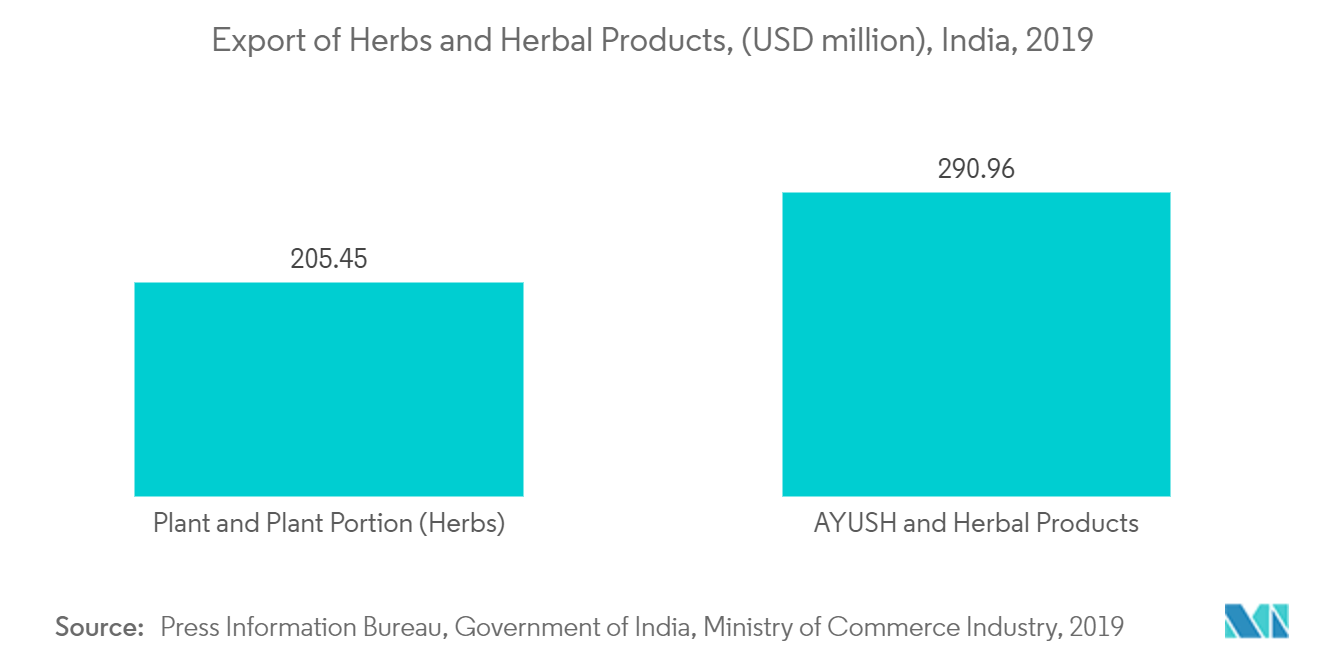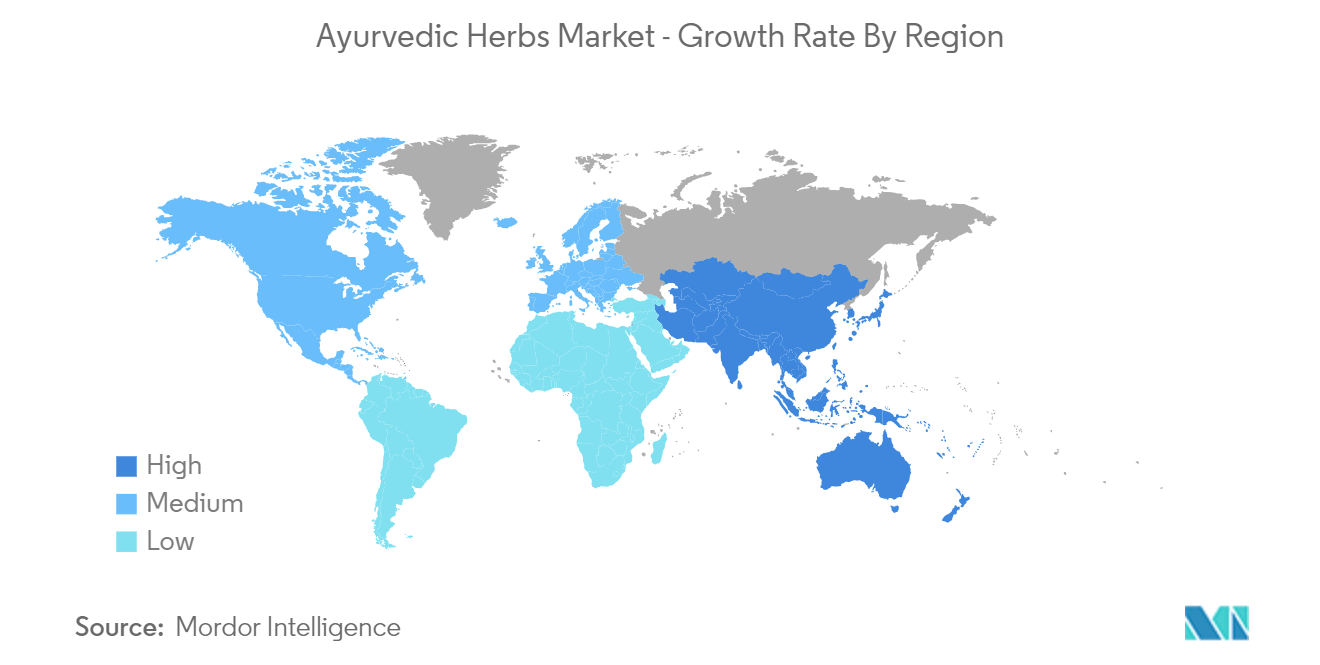Market Trends of Global Ayurvedic Herbs Industry
This section covers the major market trends shaping the Ayurvedic Herbs Market according to our research experts:
Skin Care and Cosmetics by Personal Product Type is Expected to Grow Over the Forecast Period
Skincare and cosmetics by personal product type is anticipated to show growth over the forecast period.
Ayurveda is a system of medicine that uses natural healing practices to cure clinical conditions such as skin diseases, sinusitis, cough, depression, and insomnia among other conditions. Ayurveda therapies use herbs, which have been integrated into general wellness and in some cases in medical use globally.
Consumers are more conscious about their health and appearance. Hence, investing more in natural and organic products. The chemical products used in some branded cosmetics cause skin problems and gradually damage the skin. As products made from ayurvedic systems use herbs as the main source, the products are safe and cruelty-free to use. These benefits of the ayurvedic products are proved to create more demand for natural and organic skincare and cosmetics products, driving the growth of the segment.
The market players in the market are actively involved in new product launches in the skincare and cosmetic segment. This increasing product launches in the segment is one of the major driving factors affecting the Skincare and cosmetics segment growth. For instance, in March 2021, Lotus Herbals launched a new premium clean beauty brand Lotus Botanicals as a premium brand and targets the growing demand for natural and organic beauty products. This latest brand is vegan and cruelty-free which is based on ingredients such as ginger root and red onion.
In addition, in line with the Union government's (India) push for the application of Ayurveda in food and beauty products, AIMIL Pharma in association with The Fragrance and Flavour Development Centre in Kannauj, India launched the Ayurveda-based beauty product 'Ayouthveda' which is prepared by adding time-tested herbs that are also used in medicines.
Therefore, owing to the aforementioned factors the skincare and cosmetics segment is booing and is expected to drive the growth of the studied market over the next few years.

Asia Pacific is Expected to Dominate the Market in the Forecast Period
The Asia Pacific is expected to dominate the market over the forecast period and beyond owing to the increasing demand for ayurvedic products. Increasing per capita expenditure on natural and organic products, and consumer awareness about the benefits of ayurvedic products are driving the growth of the studied market.
With the shift in demand of customers toward natural products, the demand for Chinese traditional medicine is growing. Along with there has been a surge in demand for Ayurvedic herbs and herbal medicines and products. The ancient medical system in India was known as Ayurveda. This is equal to conventional Western medicine, traditional Chinese medicine, naturopathic medicine, and homeopathic medicine. But the demand for Ayurveda in India as well as in other countries of the region is driving the growth of the studied market in the region.
In August 2020, Dabur expanded its baby care product portfolio and launched 8 new Ayurveda-based products available exclusively on the e-commerce platform Amazon. In addition, in September 2020 Chemo Recovery Kits containing Ayurvedic formulations for cancer patients were launched which was developed by the Integrated Cancer Treatment and Research Centre of the Bharatiya Sanskriti Darshan Trust. Therefore, the increasing number of product launches in the region is expected to boost the studied market growth.
The government initiatives in India to promote Ayurvedic products and medicines are highly effective and drive the growth of the studied market. For instance, in March 2020, India's Ministry of AYUSH (Ayurveda, Yoga, Naturopathy, Unani, Siddha, and Homoeopathy) and the World Health Organisation (WHO) signed a deal worth USD 3.5 million for advancing traditional medicine systems, including Ayurveda. In addition, in March 2022, again WHO and the Government of India signed an agreement to establish the WHO Global Centre for Traditional Medicine in India. The government of India will invest USD 250 million in the development of the Center. Furthermore, in January 2022, the Consulate General of India, Guangzhou organized an event to promote Indian Herbal/Ayurveda/Beauty Products in China. More than 70 Indian exporters have taken part in the event.
Thus, owing to consumer awareness, frequent product launches across various applications and inclined government initiatives in the countries, the Asia Pacific region is expected to dominate the market over the forecast period.


